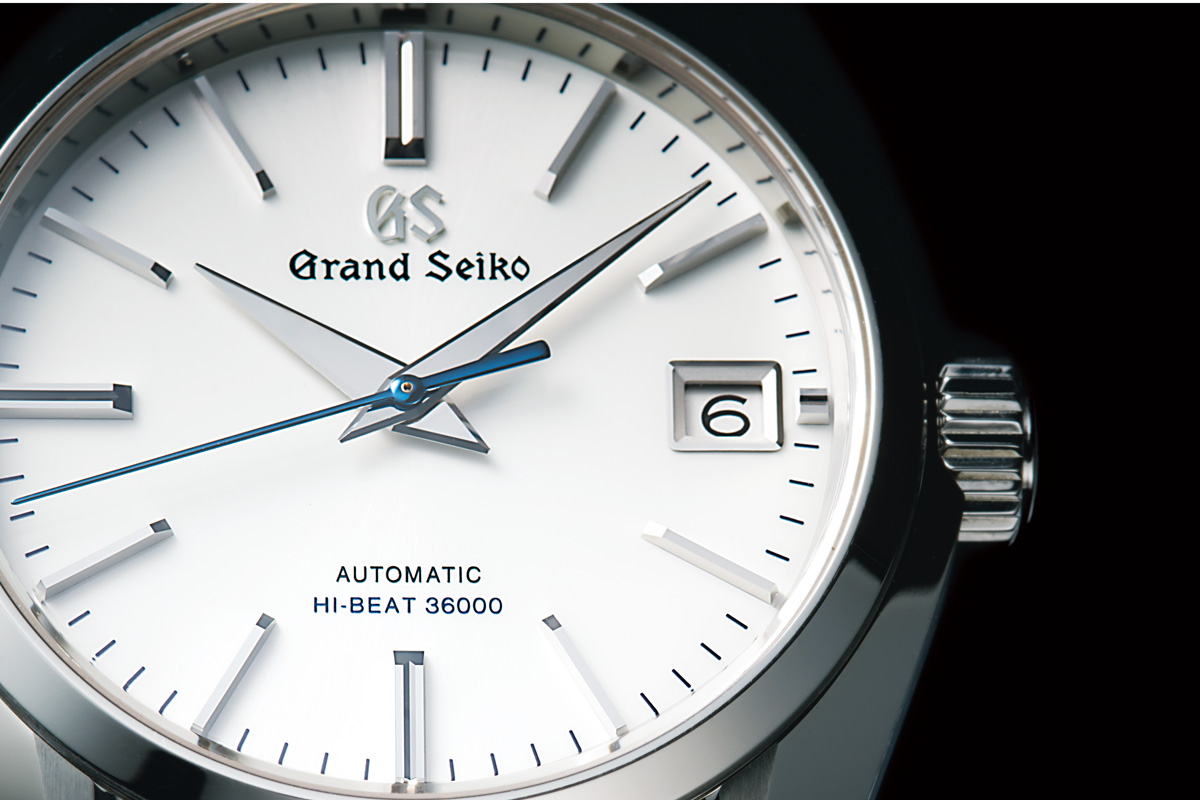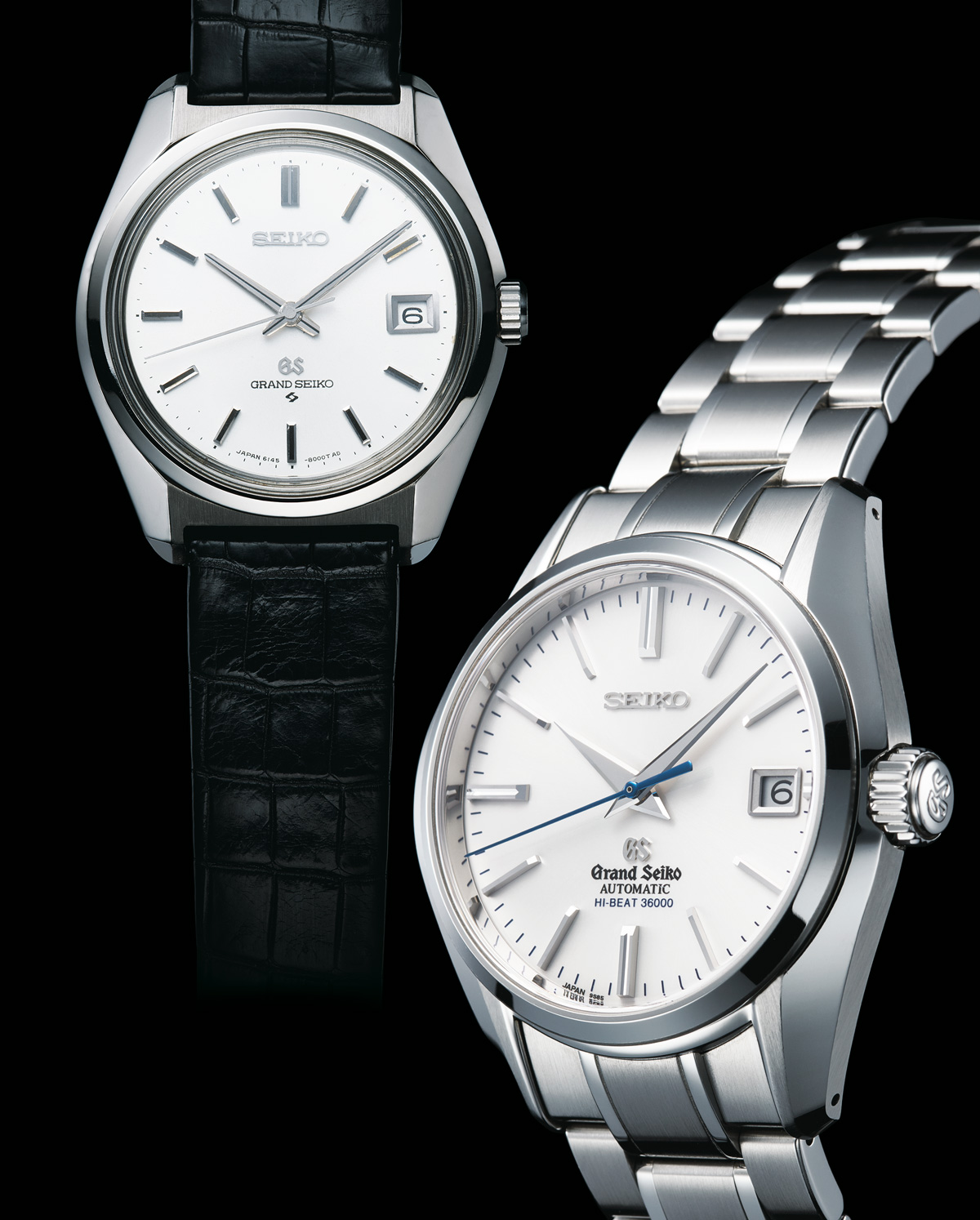
The 10-beat movement: A superb balance of precision and durability
This is the story of Grand Seiko. It is a story of vision, determination, commitment, innovation and, most of all, of the quiet, calm and utterly single-minded determination of two generations of watchmakers to create watches that are absolutely as good as they can possibly be. The first Grand Seiko appeared in 1960 but the story started long before and continues to unfold and gather pace today. Who knows? Perhaps the best is yet to come.

The quest for high precision
A wristwatch's precision is the ultimate test of its quality, which is why, from the very start, the Grand Seiko team had always put precision at the top of the list of priorities. The company had long been honing the precision of its watches in Japanese chronometer trials but, wanting to test itself against the world’s best, accepted the gracious invitation of Neuchatel and Geneva Observatory chronometer accuracy competitions and participated from the early 1960s, vying with the world's top watchmakers to make the most accurate watches. It was through this process that the Grand Seiko team became convinced that high-beat movements were the best way to achieve the greatest precision.
In every mechanical watch, the force exerted by the mainspring as it unwinds turns the gears while the constant rate of oscillation of the balance wheel applies a brake on the gears, resulting in the precise rotation of the hands. The precision of a watch therefore depends on the stability of the balance wheel. Just as a fast-spinning top is more stable than a slow-spinning one, the higher the oscillation frequency of the balance, the less susceptible is the movement to the impact of shock and other forces and the greater the precision.

Caliber 6145, the automatic winding10-beat movement created by Suwa Seikosha. While featuring a high 10-beat movement, it also had a hacking function, which was considered technologically difficult at that time. An acclaimed timepiece that combined high accuracy, practicality and reliability.
Through its experience in the Observatory competitions, the team identified 36,000 oscillations per hour (10 per second) as the rate needed to achieve both high accuracy and durability and, in 1968, two different high-beat movements were created. The Suwa Seikosha team made the automatic winding Caliber 61 series and Daini Seikosha the manual winding Caliber 45 series. With these two new calibers, the company took its place among the selected few manufacturers who successfully rose to the high-beat challenge.

Caliber 4520, the manual winding 10-beat movement manufactured by Daini Seikosha, had a profile of just 3.5 mm. Slimmer than the 44 and 57 series movements, it featured an elegant design as well as high precision. With the creation of this caliber and the 61 series, Grand Seiko offered a range of 10-beat movements that was among the most extensive in the world.
By the 1990s, advances in manufacturing and materials had opened new possibilities in Grand Seiko’s mechanical watchmaking and these advances were used to the full in the creation of the completely new 9S mechanical movement in 1998. Following its development, the engineers began pursuing even higher accuracy and durability and, in 2004, a new project was launched to develop a 10-beat movement that would take Grand Seiko’s precision to a new level.
.jpg)
The manual winding Caliber 4580 manufactured by Daini Seikosha. Applying the technology honed through participation in the Observatory chronometer competitions, this V.F.A. movement achieved the astounding level of accuracy of ±1 minute per month.
New materials and manufacturing processes make possible a new 10- beat movement
There were more than a few issues that needed to be resolved before a new 10-beat movement could be created. As a 10-beat movement requires greater torque than does an 8-beat, the first task was developing a new, stronger mainspring. To meet this need, SPRON 530 was created. This resulted in a new movement with 6 percent more torque. A new hairspring was also used that was less susceptible to changes of ambient temperature changes, magnetic forces, shock and other factors that could affect the movement's precision. Five years of development culminated in SPRON 610, which had double the shock resistance of conventional materials, and three times more magnetic resistance. As most watch brands outsource their springs, it was difficult for them to achieve such high specifications. But Daini Seikosha's engagement in materials research and the manufacture of springs had started in the 1940s and 50s and made possible these advances.
Through these innovations, a power reserve of about 55 hours was achieved, a remarkable level for a 10-beat movement. Moreover, in the new design, a new reverser was made to make the winding of the spring faster and more efficient.
Innovation continued. In the development of the current 10-beat movement, Caliber 9S85, the escape wheel and pallet fork that are at the heart of the escapement were designed afresh using MEMS (Micro Electro Mechanical System) technology which the company had originally developed for use in the manufacture of semiconductors. By subjecting high precision molds made from a special plastic to a nickel electroforming process, extremely precise, smooth surfaced and very hard components can be made. This MEMS technology was used to reduce the weight of the escape wheel, pallet fork, and other components, making them more efficient and delivering a much higher level of consistency and precision in the manufacturing. Using MEMS, components are made to tolerances of 1,000th of a millimeter.
At last it all came together. With a new mainspring with powerful torque, a hairspring with strong shock and magnetic resistance, and escapement parts that are very durable and made to a new high degree of precision, the new 36,000 bph hi-beat movement, Caliber 9S85 was made in 2009.

Right: Grand Seiko Mechanical Hi-Beat 36000 released in 2009 was the first to carry the 10-beat movement, Caliber 9S85. It offered a precision of +5 to -3 seconds per day and a power reserve of 55 hours.

